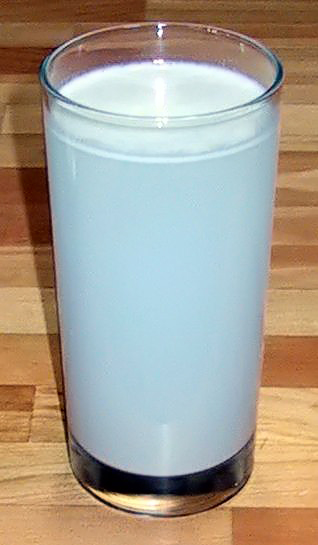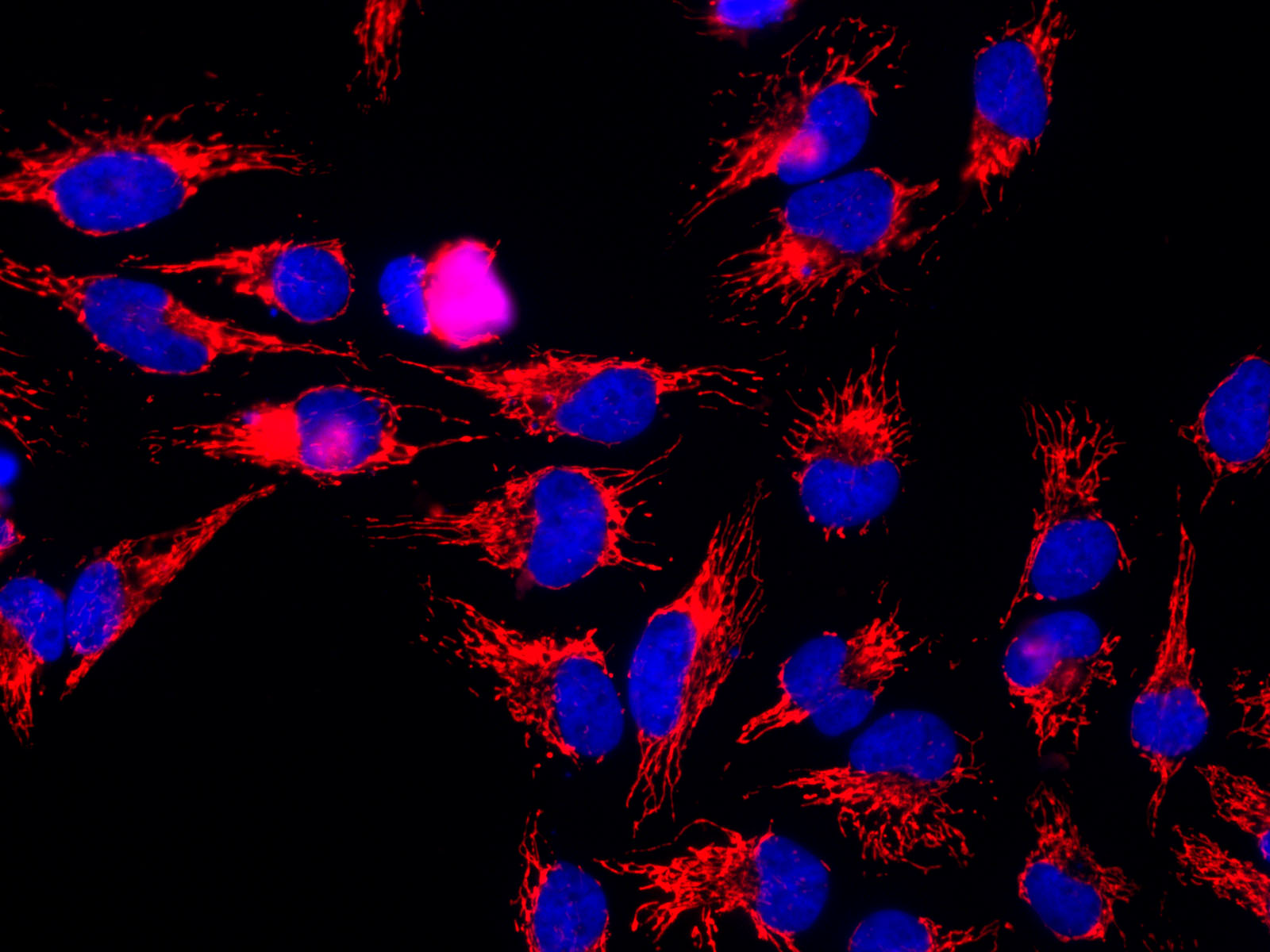|
Molecular-mass
The molecular mass (''m'') is the mass of a given molecule: it is measured in daltons (Da or u). Different molecules of the same compound may have different molecular masses because they contain different isotopes of an element. The related quantity relative molecular mass, as defined by IUPAC, is the ratio of the mass of a molecule to the unified atomic mass unit (also known as the dalton) and is unitless. The molecular mass and relative molecular mass are distinct from but related to the molar mass. The molar mass is defined as the mass of a given substance divided by the amount of a substance and is expressed in g/mol. That makes the molar mass an average of many particles or molecules, and the molecular mass the mass of one specific particle or molecule. The molar mass is usually the more appropriate figure when dealing with macroscopic (weigh-able) quantities of a substance. The definition of molecular weight is most authoritatively synonymous with relative molecular mass; ho ... [...More Info...] [...Related Items...] OR: [Wikipedia] [Google] [Baidu] |
Dalton (unit)
The dalton or unified atomic mass unit (symbols: Da or u) is a non-SI unit of mass widely used in physics and chemistry. It is defined as of the mass of an unbound neutral atom of carbon-12 in its nuclear and electronic ground state and at rest. The atomic mass constant, denoted ''m''u, is defined identically, giving . This unit is commonly used in physics and chemistry to express the mass of atomic-scale objects, such as atoms, molecules, and elementary particles, both for discrete instances and multiple types of ensemble averages. For example, an atom of helium-4 has a mass of . This is an intrinsic property of the isotope and all helium-4 atoms have the same mass. Acetylsalicylic acid (aspirin), , has an average mass of approximately . However, there are no acetylsalicylic acid molecules with this mass. The two most common masses of individual acetylsalicylic acid molecules are , having the most common isotopes, and , in which one carbon is carbon-13. The molecular mass ... [...More Info...] [...Related Items...] OR: [Wikipedia] [Google] [Baidu] |
Dimensionless
A dimensionless quantity (also known as a bare quantity, pure quantity, or scalar quantity as well as quantity of dimension one) is a quantity to which no physical dimension is assigned, with a corresponding SI unit of measurement of one (or 1), ISBN 978-92-822-2272-0. which is not explicitly shown. Dimensionless quantities are widely used in many fields, such as mathematics, physics, chemistry, engineering, and economics. Dimensionless quantities are distinct from quantities that have associated dimensions, such as time (measured in seconds). Dimensionless units are dimensionless values that serve as units of measurement for expressing other quantities, such as radians (rad) or steradians (sr) for plane angles and solid angles, respectively. For example, optical extent is defined as having units of metres multiplied by steradians. History Quantities having dimension one, ''dimensionless quantities'', regularly occur in sciences, and are formally treated within the field of d ... [...More Info...] [...Related Items...] OR: [Wikipedia] [Google] [Baidu] |
Dynamic Light Scattering
Dynamic light scattering (DLS) is a technique in physics that can be used to determine the size distribution profile of small particles in suspension or polymers in solution. In the scope of DLS, temporal fluctuations are usually analyzed using the intensity or photon auto-correlation function (also known as photon correlation spectroscopy or quasi-elastic light scattering). In the time domain analysis, the autocorrelation function (ACF) usually decays starting from zero delay time, and faster dynamics due to smaller particles lead to faster decorrelation of scattered intensity trace. It has been shown that the intensity ACF is the Fourier transform of the power spectrum, and therefore the DLS measurements can be equally well performed in the spectral domain. DLS can also be used to probe the behavior of complex fluids such as concentrated polymer solutions. Setup A monochromatic light source, usually a laser, is shot through a polarizer and into a sample. The scattered light then ... [...More Info...] [...Related Items...] OR: [Wikipedia] [Google] [Baidu] |
Suspension (chemistry)
In chemistry, a suspension is a heterogeneous mixture of a fluid that contains solid particles sufficiently large for sedimentation. The particles may be visible to the naked eye, usually must be larger than one micrometer, and will eventually settle, although the mixture is only classified as a suspension when and while the particles have not settled out. Properties A suspension is a heterogeneous mixture in which the solute particles do not dissolve, but get suspended throughout the bulk of the solvent, left floating around freely in the medium. The internal phase (solid) is dispersed throughout the external phase (fluid) through mechanical agitation, with the use of certain excipients or suspending agents. An example of a suspension would be sand in water. The suspended particles are visible under a microscope and will settle over time if left undisturbed. This distinguishes a suspension from a colloid, in which the colloid particles are smaller and do not settle. Colloids a ... [...More Info...] [...Related Items...] OR: [Wikipedia] [Google] [Baidu] |
Solution (chemistry)
In chemistry, a solution is a special type of homogeneous mixture composed of two or more substances. In such a mixture, a solute is a substance dissolved in another substance, known as a solvent. If the attractive forces between the solvent and solute particles are greater than the attractive forces holding the solute particles together, the solvent particles pull the solute particles apart and surround them. These surrounded solute particles then move away from the solid solute and out into the solution. The mixing process of a solution happens at a scale where the effects of chemical polarity are involved, resulting in interactions that are specific to solvation. The solution usually has the state of the solvent when the solvent is the larger fraction of the mixture, as is commonly the case. One important parameter of a solution is the concentration, which is a measure of the amount of solute in a given amount of solution or solvent. The term "aqueous solution" is used when ... [...More Info...] [...Related Items...] OR: [Wikipedia] [Google] [Baidu] |
Intrinsic Viscosity
Intrinsic viscosity \left \eta \right/math> is a measure of a solute's contribution to the viscosity \eta of a solution. It should not be confused with inherent viscosity, which is the ratio of the natural logarithm of the relative viscosity to the mass concentration of the polymer. Intrinsic viscosity is defined as : \left \eta \right= \lim_ \frac where \eta_0 is the viscosity in the absence of the solute, \eta is (dynamic or kinematic) viscosity of the solution and \phi is the volume fraction of the solute in the solution. As defined here, the intrinsic viscosity \left \eta \right/math> is a dimensionless number. When the solute particles are rigid spheres at infinite dilution, the intrinsic viscosity equals \frac, as shown first by Albert Einstein. In practical settings, \phi is usually solute mass concentration (c, g/dL), and the units of intrinsic viscosity \left \eta \right/math> are deciliters per gram (dL/g), otherwise known as inverse concentration. Formulae for ri ... [...More Info...] [...Related Items...] OR: [Wikipedia] [Google] [Baidu] |
Mark–Houwink Equation
The Mark–Houwink equation, also known as the Mark–Houwink–Sakurada equation or the Kuhn–Mark–Houwink–Sakurada equation or the Landau–Kuhn–Mark–Houwink–Sakurada equation or the Mark-Chrystian equation gives a relation between intrinsic viscosity eta/math> and molecular weight M: :etaKM^a From this equation the molecular weight of a polymer can be determined from data on the intrinsic viscosity and vice versa. The values of the Mark–Houwink parameters, a and K, depend on the particular polymer-solvent system. For solvents, a value of a=0.5 is indicative of a theta solvent. A value of a=0.8 is typical for good solvents. For most flexible polymers, 0.5\leq a\leq 0.8. For semi-flexible polymers, a\ge 0.8. For polymers with an absolute rigid rod, such as Tobacco mosaic virus, a=2.0. It is named after Herman F. Mark and Roelof Houwink. Applications In size-exclusion chromatography, such as gel permeation chromatography, the intrinsic viscosity of a polymer is direct ... [...More Info...] [...Related Items...] OR: [Wikipedia] [Google] [Baidu] |
Adeno-associated Virus
Adeno-associated viruses (AAV) are small viruses that infect humans and some other primate species. They belong to the genus ''Dependoparvovirus'', which in turn belongs to the family ''Parvoviridae''. They are small (approximately 26 nm in diameter) replication-defective, nonenveloped viruses and have linear single-stranded DNA (ssDNA) genome of approximately 4.8 kilobases (kb). AAV are not currently known to cause disease. The viruses cause a very mild immune response. Several additional features make AAV an attractive candidate for creating viral vectors for gene therapy, and for the creation of isogenic human disease models. Gene therapy vectors using AAV can infect both dividing and quiescent cells and persist in an extrachromosomal state without integrating into the genome of the host cell. In the native virus, however, integration of virally carried genes into the host genome does occur. Integration can be important for certain applications, but can also have unwan ... [...More Info...] [...Related Items...] OR: [Wikipedia] [Google] [Baidu] |
GroEL
GroEL is a protein which belongs to the chaperonin family of molecular chaperones, and is found in many bacteria. It is required for the proper folding of many proteins. To function properly, GroEL requires the lid-like cochaperonin protein complex GroES. In eukaryotes the organellar proteins Hsp60 and Hsp10 are structurally and functionally nearly identical to GroEL and GroES, respectively, due to their endosymbiotic origin. HSP60 is implicated in mitochondrial protein import and macromolecular assembly. It may facilitate the correct folding of imported proteins, and may also prevent misfolding and promote the refolding and proper assembly of unfolded polypeptides generated under stress conditions in the mitochondrial matrix. HSP60 interacts with HRAS and with HBV protein X and HTLV-1 protein p40tax. HSP60 belongs to the chaperonin (HSP60) family. Note: This description may include information from UniProtKB. Alternate Names: 60 kDa chaperonin, Chaperonin 60, CPN60, Heat shock ... [...More Info...] [...Related Items...] OR: [Wikipedia] [Google] [Baidu] |
Ribosomes
Ribosomes ( ) are macromolecular machines, found within all cells, that perform biological protein synthesis (mRNA translation). Ribosomes link amino acids together in the order specified by the codons of messenger RNA (mRNA) molecules to form polypeptide chains. Ribosomes consist of two major components: the small and large ribosomal subunits. Each subunit consists of one or more ribosomal RNA (rRNA) molecules and many ribosomal proteins (RPs or r-proteins). The ribosomes and associated molecules are also known as the ''translational apparatus''. Overview The sequence of DNA that encodes the sequence of the amino acids in a protein is transcribed into a messenger RNA chain. Ribosomes bind to messenger RNAs and use their sequences for determining the correct sequence of amino acids to generate a given protein. Amino acids are selected and carried to the ribosome by transfer RNA (tRNA) molecules, which enter the ribosome and bind to the messenger RNA chain via an anti-cod ... [...More Info...] [...Related Items...] OR: [Wikipedia] [Google] [Baidu] |
Oligomerisation
In chemistry and biochemistry, an oligomer () is a molecule that consists of a few repeating units which could be derived, actually or conceptually, from smaller molecules, monomers.Quote: ''Oligomer molecule: A molecule of intermediate relative molecular mass, the structure of which essentially comprises a small plurality of units derived, actually or conceptually, from molecules of lower relative molecular mass.'' The name is composed of Greek elements '' oligo-'', "a few" and '' -mer'', "parts". An adjective form is ''oligomeric''. The oligomer concept is contrasted to that of a polymer, which is usually understood to have a large number of units, possibly thousands or millions. However, there is no sharp distinction between these two concepts. One proposed criterion is whether the molecule's properties vary significantly with the removal of one or a few of the units. An oligomer with a specific number of units is referred to by the Greek prefix denoting that number, wit ... [...More Info...] [...Related Items...] OR: [Wikipedia] [Google] [Baidu] |
Monoisotopic Mass
Monoisotopic mass (Mmi) is one of several types of molecular masses used in mass spectrometry. The theoretical monoisotopic mass of a molecule is computed by taking the sum of the accurate masses (including mass defect) of the most abundant naturally occurring stable isotope of each atom in the molecule. For small molecules made up of low atomic number elements the monoisotopic mass is observable as an isotopically pure peak in a mass spectrum. This differs from the nominal molecular mass, which is the sum of the mass number of the primary isotope of each atom in the molecule and is an integer. It also is different from the molar mass, which is a type of average mass. For some atoms like carbon, oxygen, hydrogen, nitrogen, and sulfur the Mmi of these elements is exactly the same as the mass of its natural isotope, which is the lightest one. However, this does not hold true for all atoms. Iron's most common isotope has a mass number of 56, while the stable isotopes of iron vary in ... [...More Info...] [...Related Items...] OR: [Wikipedia] [Google] [Baidu] |





